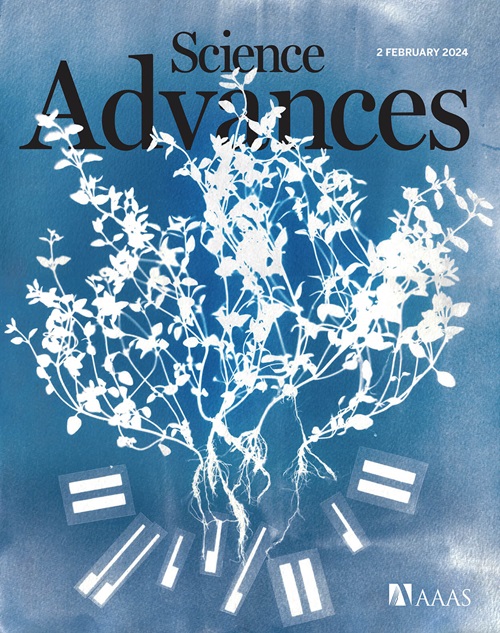IF 11.7
1区 综合性期刊
Q1 MULTIDISCIPLINARY SCIENCES
引用次数: 0
摘要
元面全息图利用光的多个自由度来提高信息通道的容量。传统上,只有使用布拉格衍射技术的三维体全息图才能实现具有高容量信息通道的波长复用全息技术。在这里,我们展示了超表面全息图中的超窄线宽波长漩涡多路复用全息技术。通过应用基本色散工程学,我们在动量空间中开发出一种稀疏的 k 向量过滤光圈阵列,从而实现了锐利的波长选择性和轨道角动量选择性。我们进一步利用变压器神经网络设计纯相位全息图,展示了从单个全息图重建多达 118 个独立图像的过程,在可见光范围内实现了 2 纳米的模拟超宽线宽。我们将这些开发的元表面全息图应用于全息视觉密码学,达到了前所未有的安全水平,信息率比传统方法高出 2500 多倍。我们的成果为超表面全息图在三维显示、全息加密和光学人工智能等多个领域的应用开辟了令人兴奋的道路。本文章由计算机程序翻译,如有差异,请以英文原文为准。

Ultranarrow-linewidth wavelength-vortex metasurface holography
Metasurface holograms harness multiple degrees of freedom of light to enhance information channel capacity. Traditionally, wavelength multiplexing holography with high-capacity information channel was only achievable through 3D volume holograms using Bragg diffraction. Here, we demonstrate ultranarrow-linewidth wavelength-vortex multiplexing holography in metasurface holograms. By applying elementary dispersion engineering, we develop a sparse k-vector–filtering aperture array in momentum space, enabling sharp wavelength selectivity combined with orbital angular momentum selectivity. Further leveraging transformer neural networks for the design of phase-only holograms, we showcase the reconstruction of up to 118 independent images from a single hologram, achieving a simulated ultranarrow linewidth of 2 nanometers within the visible range. We apply these developed metasurface holograms for holographic visual cryptography, attaining unprecedented security levels with an information rate over 2500 times higher than traditional methods. Our results open exciting avenues for the application of metasurface holograms in various fields, including 3D displays, holographic encryption, and optical artificial intelligence.
求助全文
通过发布文献求助,成功后即可免费获取论文全文。
去求助
来源期刊

Science Advances
综合性期刊-综合性期刊
CiteScore
21.40
自引率
1.50%
发文量
1937
审稿时长
29 weeks
期刊介绍:
Science Advances, an open-access journal by AAAS, publishes impactful research in diverse scientific areas. It aims for fair, fast, and expert peer review, providing freely accessible research to readers. Led by distinguished scientists, the journal supports AAAS's mission by extending Science magazine's capacity to identify and promote significant advances. Evolving digital publishing technologies play a crucial role in advancing AAAS's global mission for science communication and benefitting humankind.
 求助内容:
求助内容: 应助结果提醒方式:
应助结果提醒方式:


